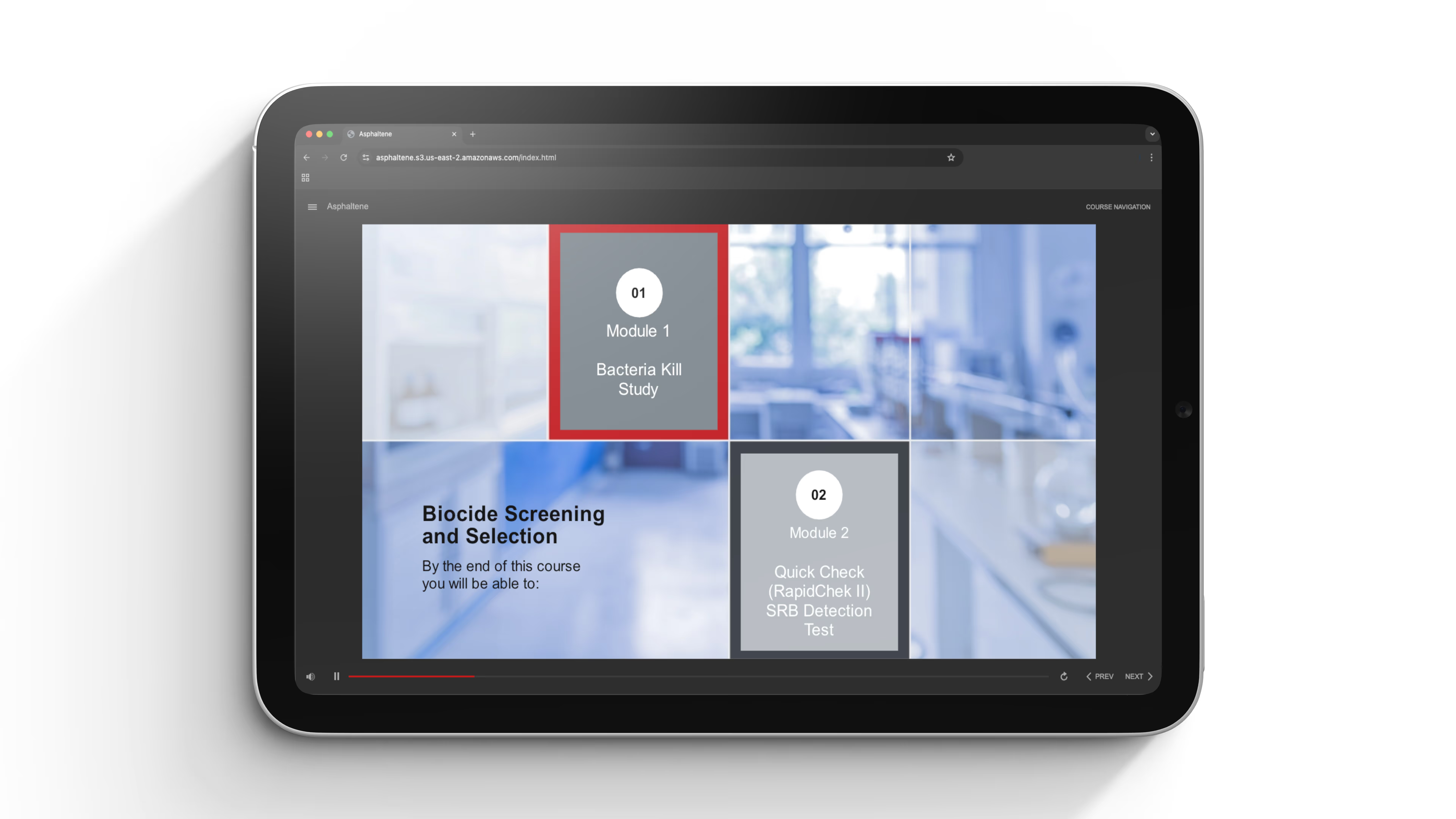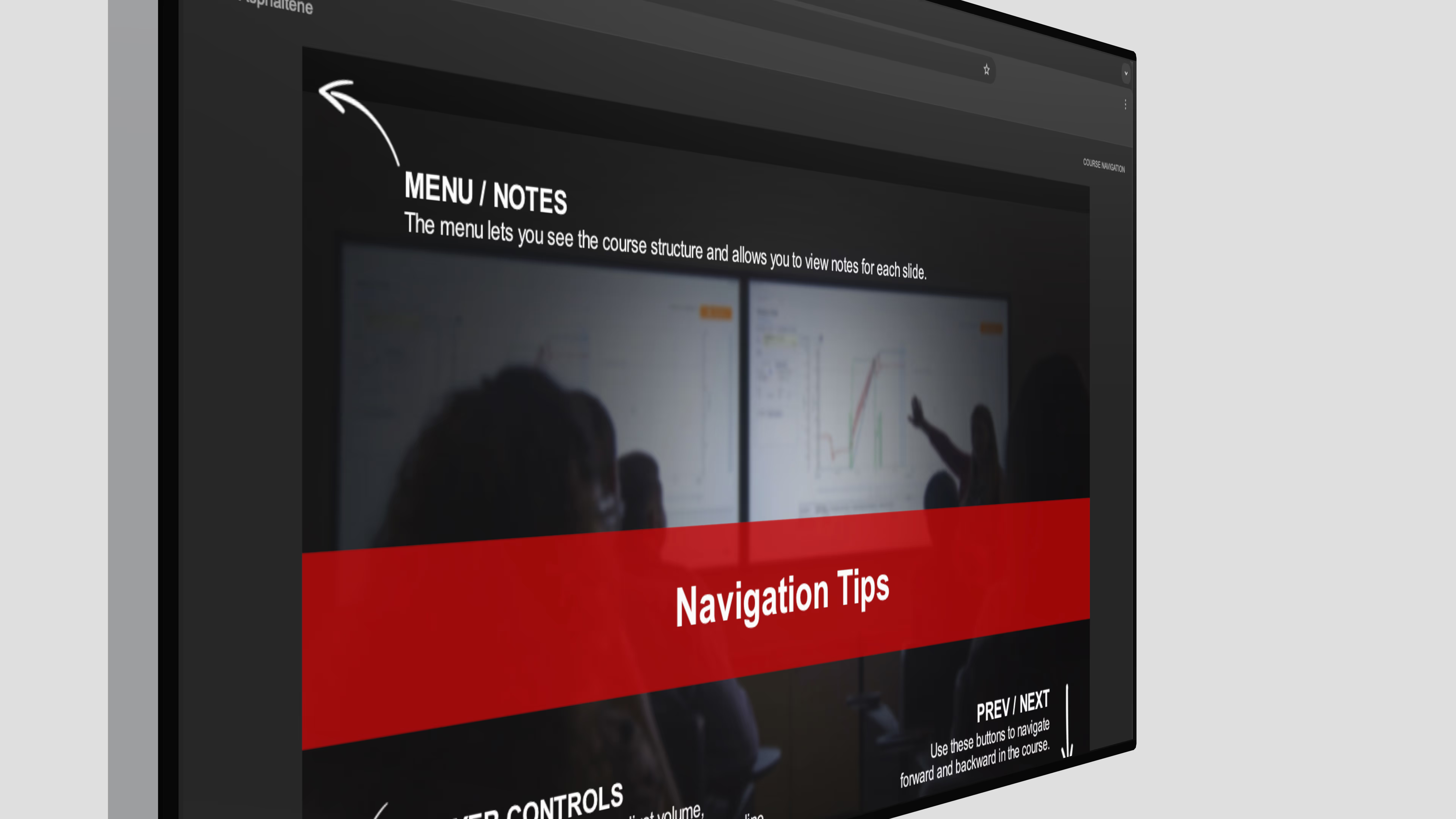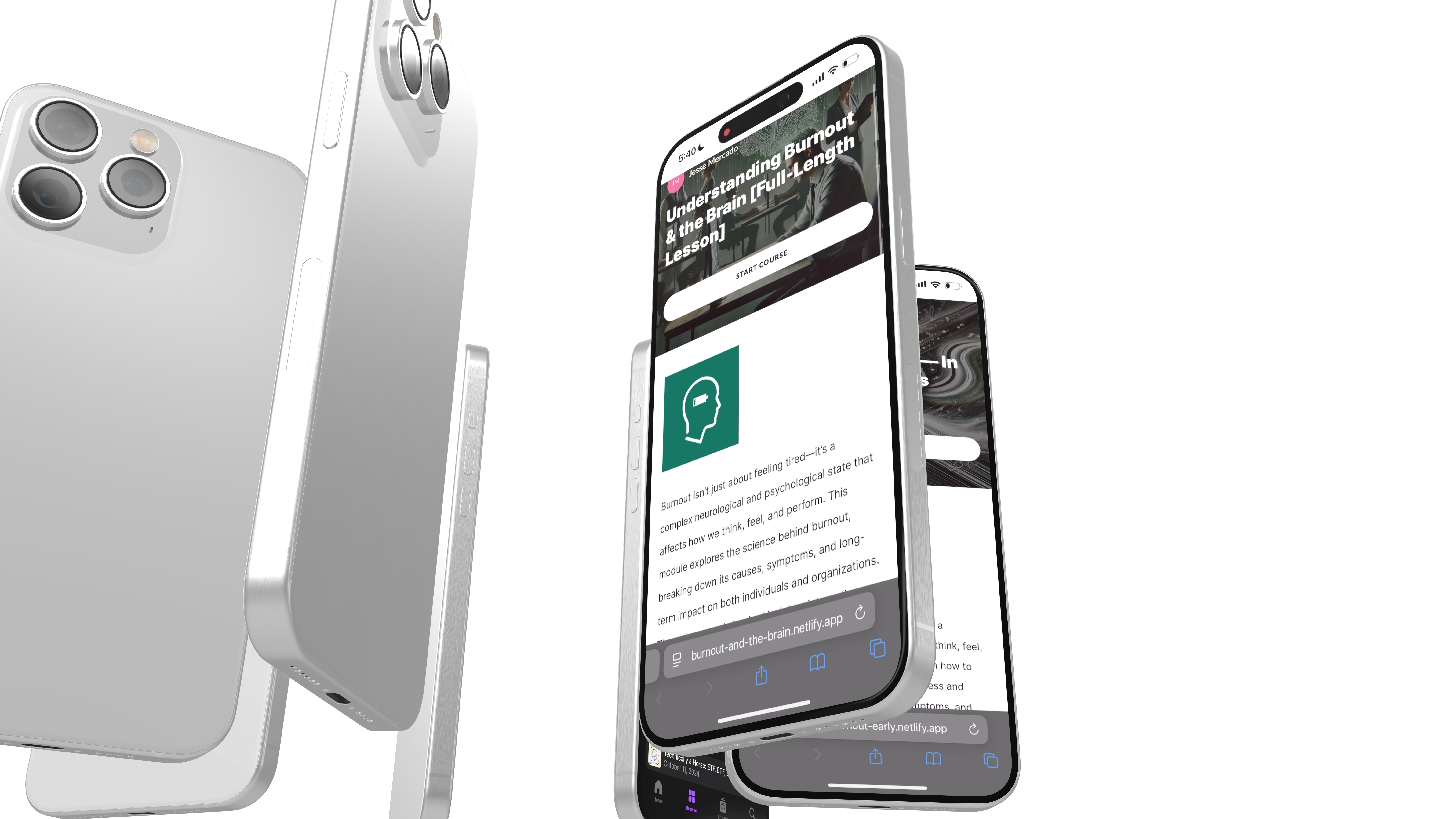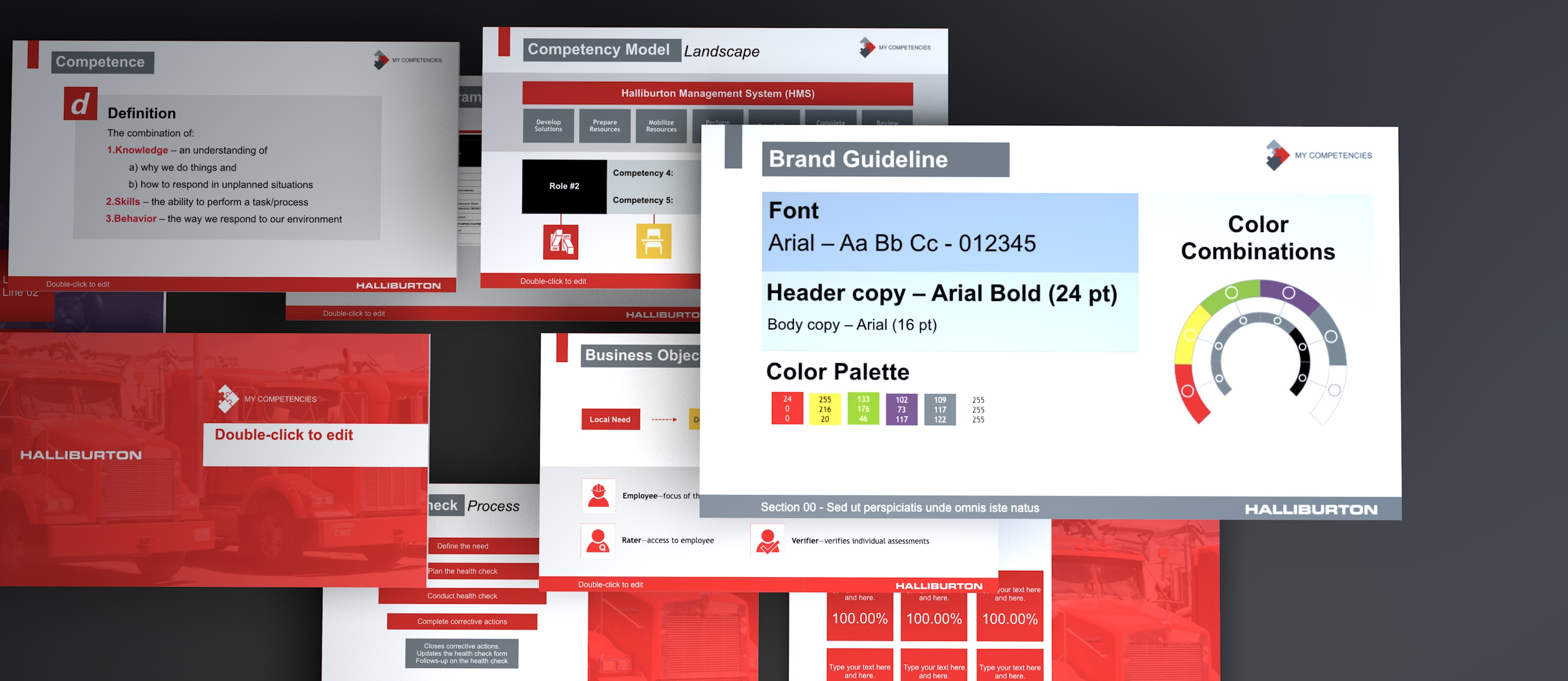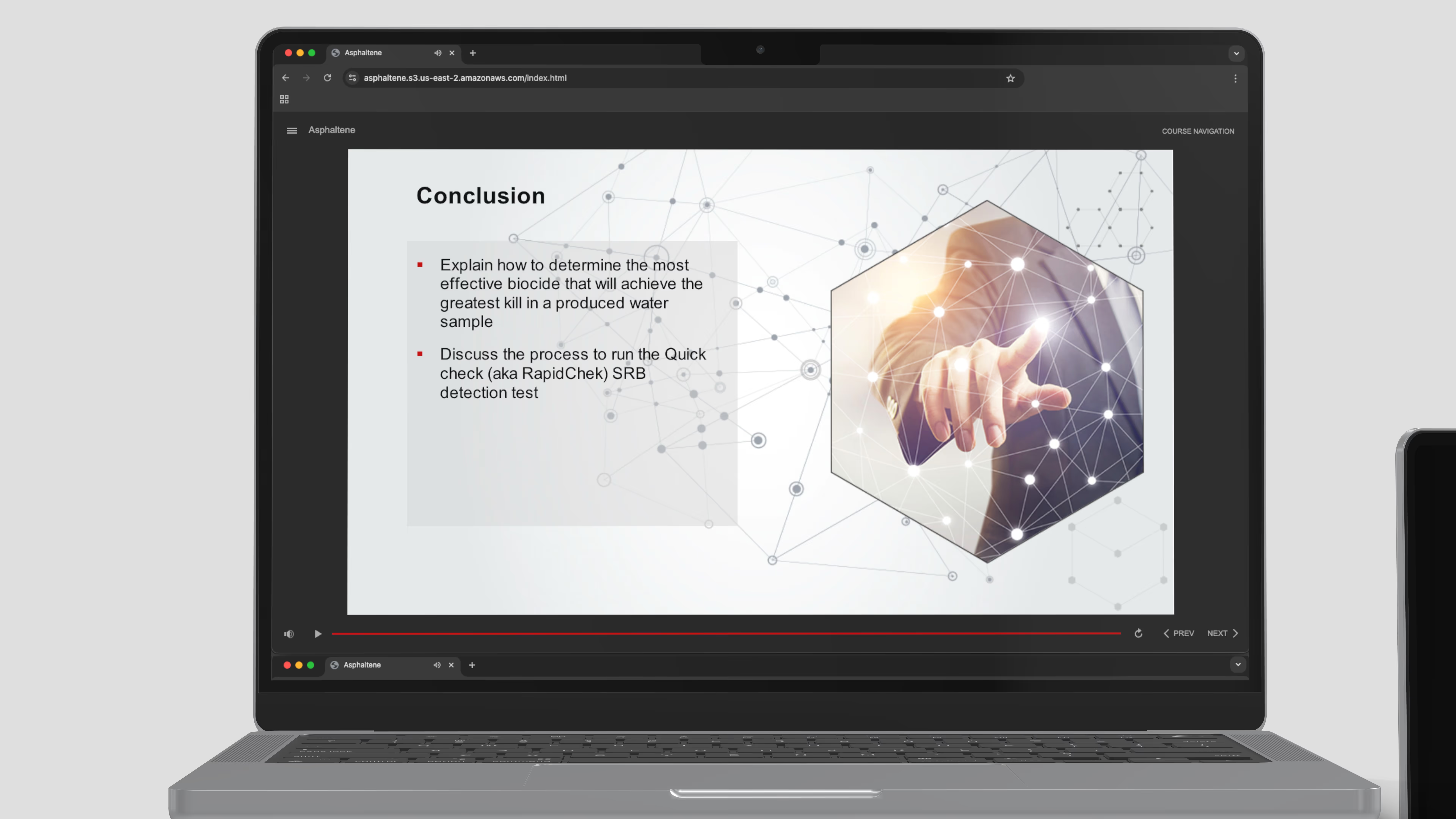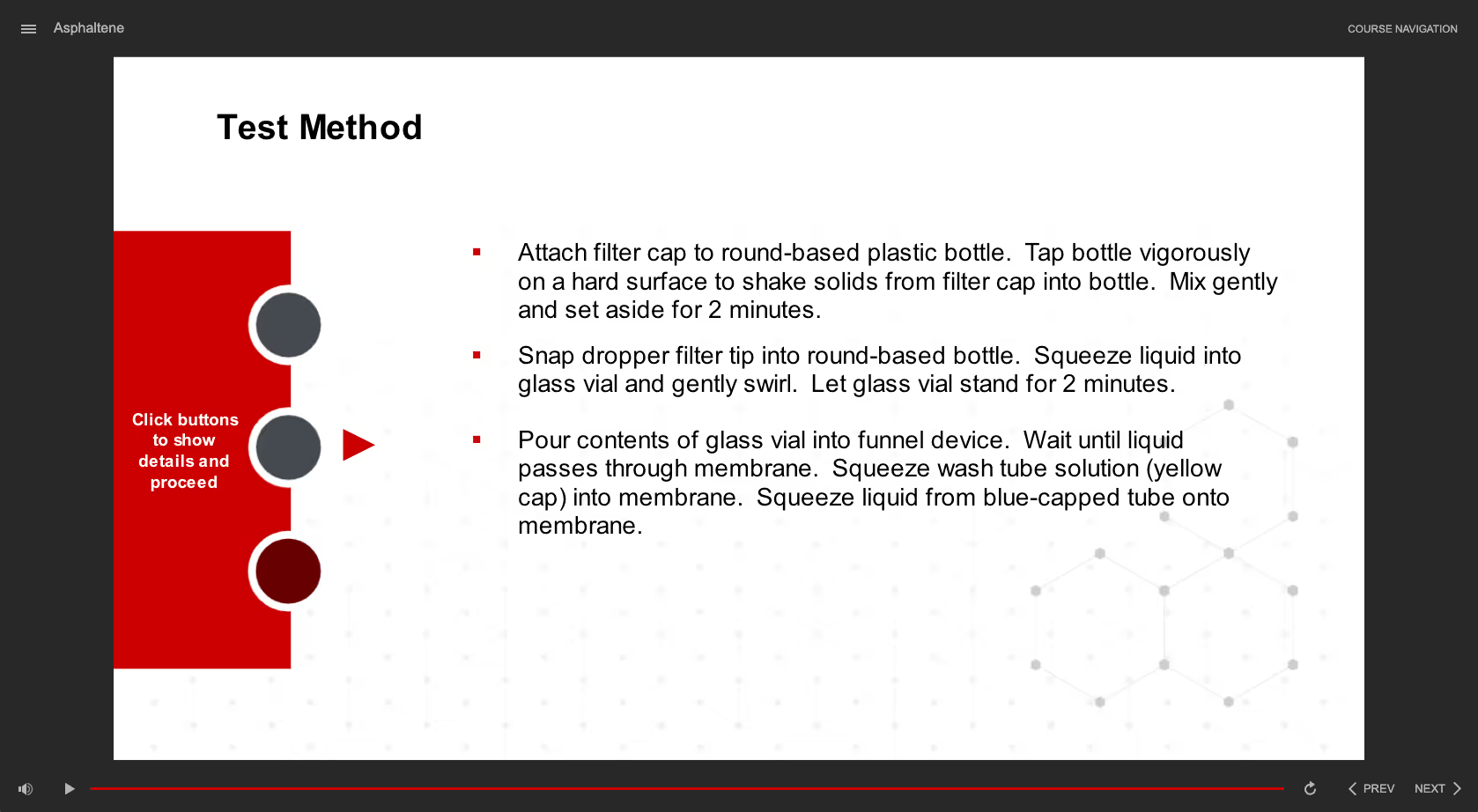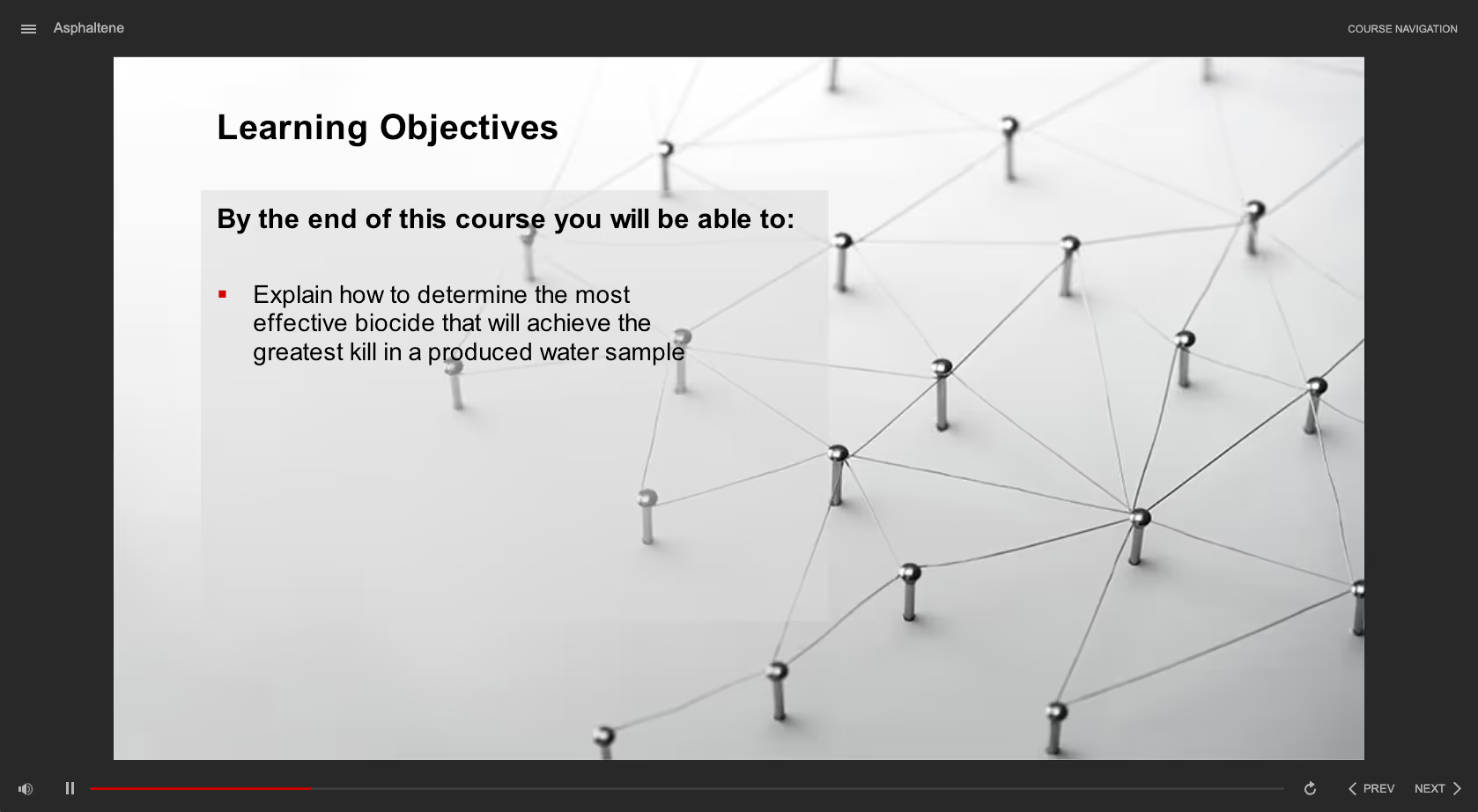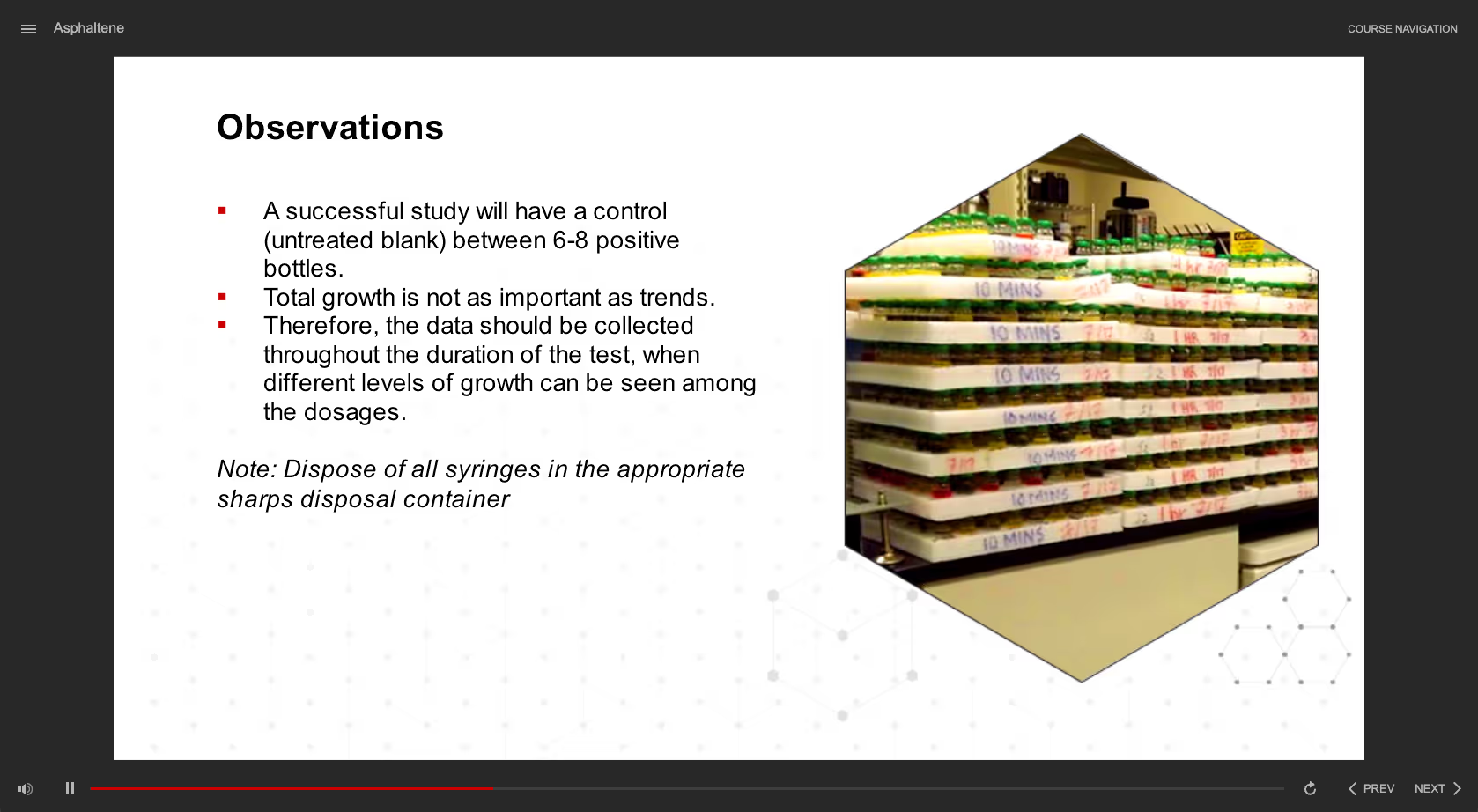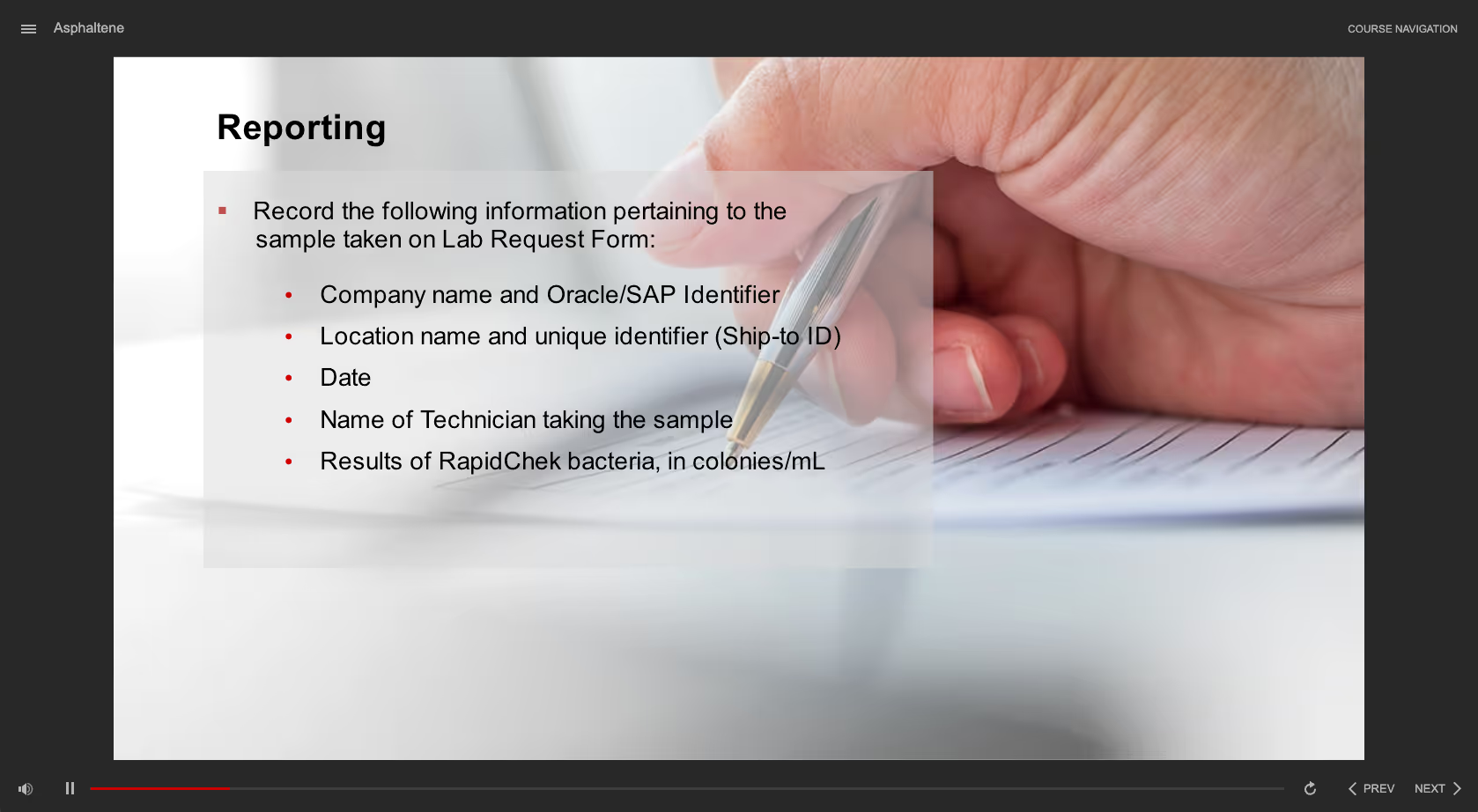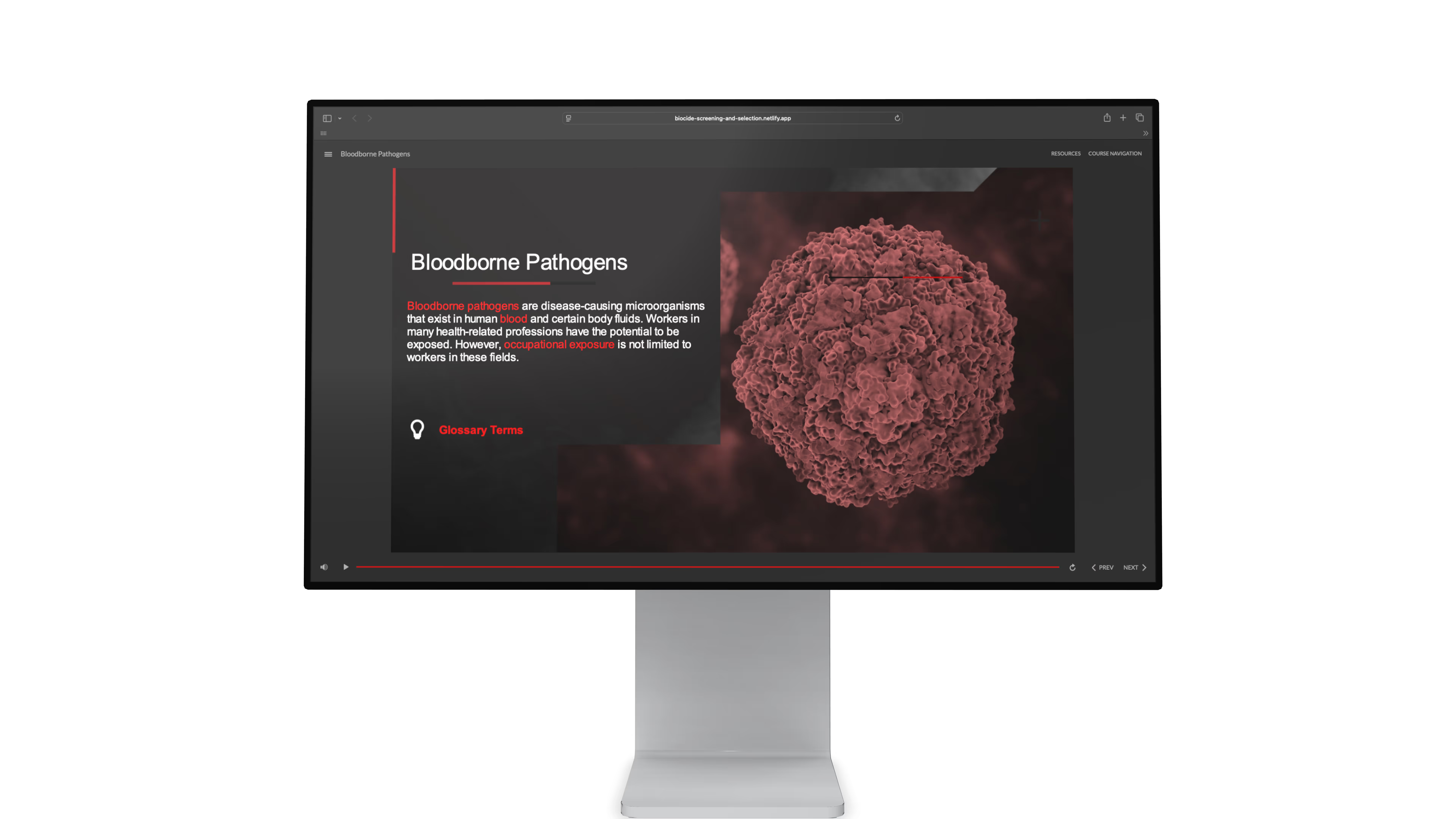1
Creative Brief
- Project Overview
This project focused on designing an interactive e-learning module to improve Halliburton’s biocide selection process in asphaltene-affected environments. Targeted at technical personnel, the course provided a clear, role-specific breakdown of biocide screening procedures and SRB (sulfate-reducing bacteria) detection, driving consistency and operational efficiency across teams.
- Goals
Deliver the module within 8 weeks, increase proficiency in biocide selection and SRB detection by 25%, and achieve 90% learner satisfaction for content relevance and usability.
- Challenges
- Simplifying complex chemical processes into digestible, interactive learning content.
- Meeting an aggressive development timeline with limited design resources.
- Timeline8 weeks / Completed 2019
- Team Size
1 Member
- Roles
1 Member
- Tools
Articulate Storyline, Adobe Photoshop, Illustrator, Adobe Dreamweaver, ActionScript, JavaScript
- Outcome
- Explain the role of asphaltenes in oilfield operations.
- Apply biocide selection criteria through simulated testing scenarios.
- Conduct and interpret SRB detection using RapidChek protocols.
- Understand cross-functional responsibilities in the biocide testing workflow.

2
Live Product Simulation
3
Motion Principles
Applied cognitive load theory and visual scaffolding to reduce complexity and increase learner retention. Scenario-based interactions were used to promote real-world application and decision-making.
Primary

Seconary

Tertiary

Key Motion Components
- Primary Motion
The course standardized biocide training across departments and strengthened operational decision-making. It also improved knowledge of testing procedures and reduced inconsistencies in field execution.
- Secondary Motion
The module led to a 20% decrease in biocide-related operational disruptions, a 95% course completion rate, and a 28% improvement in post-assessment scores. Learners reported a 90% satisfaction rate, validating both the content’s clarity and its practical relevance.
- Tertiary Motion
- Breaking down technical material into role-based flows increases cross-functional engagement.
- Early SME involvement ensures relevance and streamlines validation.
- Rationale
Fully WCAG-compliant, including screen reader support, alt text, closed captions, and keyboard navigation for all interactive components.
Easing Curves & Durations

navigational transitions
Custom Animated components

Infographics

4
Engineering Implentation
Approach
Prototype Setup
.jpg)




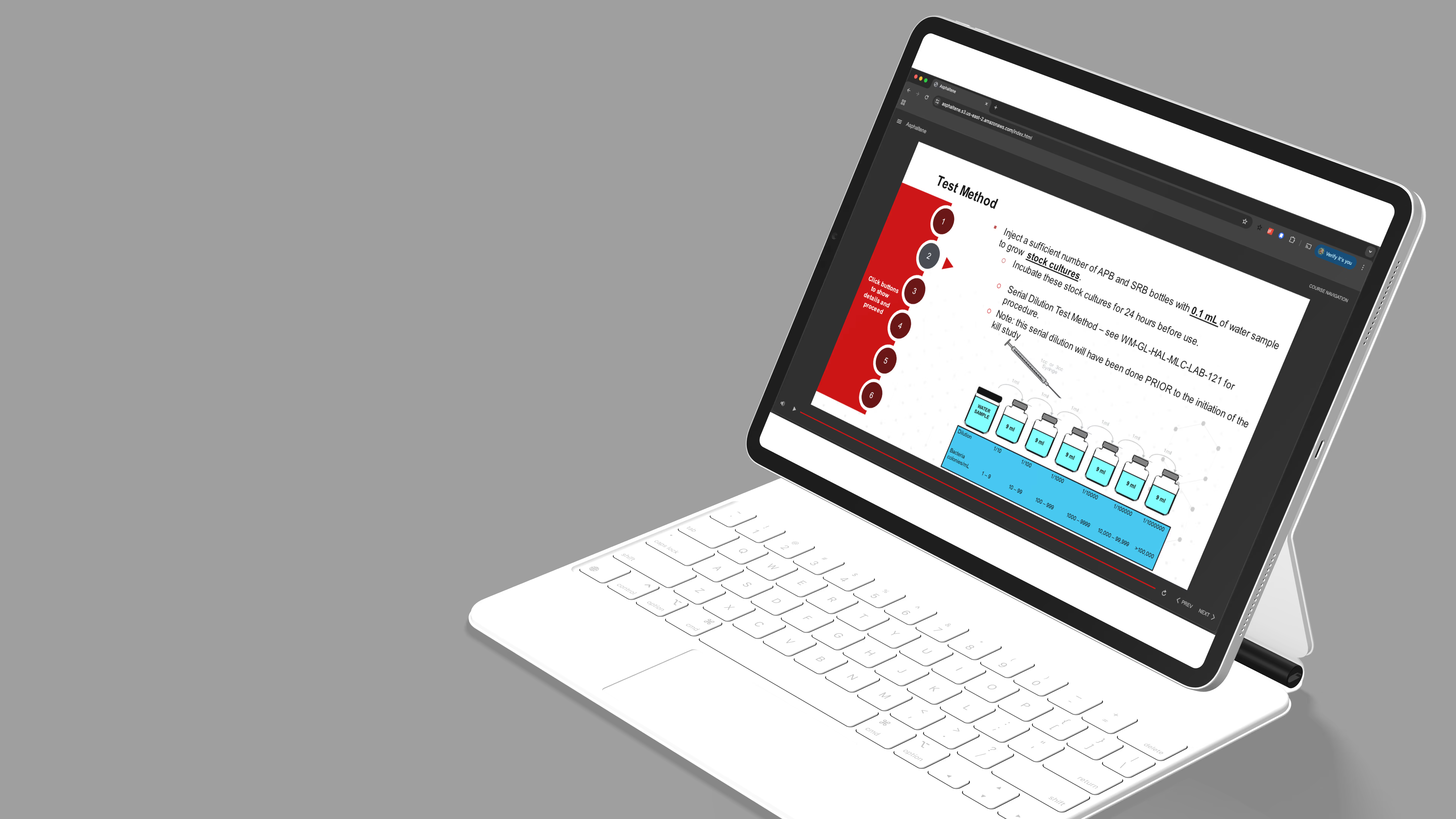
1
Build Overview
2
Creative Rationale
Goal
Deliver the module within 8 weeks, increase proficiency in biocide selection and SRB detection by 25%, and achieve 90% learner satisfaction for content relevance and usability.
Process
- Discovery & Planning – Partnered with SMEs to define core concepts, learner personas, and success metrics.
- Design & Development – Built interactive modules in Articulate Storyline with animations, quizzes, and reference popups.
- Testing & Deployment – Completed cross-platform QA and accessibility reviews prior to LMS launch.
Key Highlights
Detailed Insights
Deep Dives
Learning Science
Applied cognitive load theory and visual scaffolding to reduce complexity and increase learner retention. Scenario-based interactions were used to promote real-world application and decision-making.
2
Creative Rationale
Goal
Challenges
Process
Impact and Results
Measurable Outcomes
Takeaways
1
The brief
Goal
Deliver the module within 8 weeks, increase proficiency in biocide selection and SRB detection by 25%, and achieve 90% learner satisfaction for content relevance and usability.
Challenges
- Simplifying complex chemical processes into digestible, interactive learning content.
- Meeting an aggressive development timeline with limited design resources.
Learning Objectives
- Explain the role of asphaltenes in oilfield operations.
- Apply biocide selection criteria through simulated testing scenarios.
- Conduct and interpret SRB detection using RapidChek protocols.
- Understand cross-functional responsibilities in the biocide testing workflow.
Learning Science
Applied cognitive load theory and visual scaffolding to reduce complexity and increase learner retention. Scenario-based interactions were used to promote real-world application and decision-making.
Learning Methodolgy
Followed the ADDIE model to structure the course from stakeholder discovery through deployment. Each module section was reviewed with SMEs to ensure technical accuracy and alignment with field procedures.
Process
- Discovery & Planning – Partnered with SMEs to define core concepts, learner personas, and success metrics.
- Design & Development – Built interactive modules in Articulate Storyline with animations, quizzes, and reference popups.
- Testing & Deployment – Completed cross-platform QA and accessibility reviews prior to LMS launch.
Impact and Results
The course standardized biocide training across departments and strengthened operational decision-making. It also improved knowledge of testing procedures and reduced inconsistencies in field execution.
Measurable Outcomes
The module led to a 20% decrease in biocide-related operational disruptions, a 95% course completion rate, and a 28% improvement in post-assessment scores. Learners reported a 90% satisfaction rate, validating both the content’s clarity and its practical relevance.
Takeaways
- Breaking down technical material into role-based flows increases cross-functional engagement.
- Early SME involvement ensures relevance and streamlines validation.
Accessibility & inclusion
Fully WCAG-compliant, including screen reader support, alt text, closed captions, and keyboard navigation for all interactive components.
3
Results
Asphaltene
